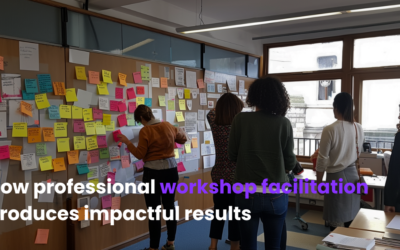When you’re engaged with a problem space, it can become difficult to separate the core problem from its symptoms, which typically manifest themselves into the problems that you deal with day to day. As a result, you can end up spending precious time and resources on solving the symptoms but not the disease. This then results in “band aid” solutions that don’t deliver the outcomes you’re expecting, nor the lasting impact you are hoping for.
After running hundreds of events and programs, we’ve developed some great processes and tools that can help you focus.
5 Whys
One simple innovation method that you can use to help delve deeper into a problem space and find its root cause, is called the 5 Whys. This method is as simple as it sounds and doesn’t take long to complete, so it’s an extremely effective way to break down the problem space and identify the real problem.
All you need to do is write a short problem statement – try to keep this to one sentence. For example ‘Why are young people so disengaged from technological and infrastructure projects?’.
Write a short answer to this question. For example, ‘Because they don’t feel that their opinions will change the outcome of the project’.
Then review your question and ask again, ‘Why is this a problem’. Do this five times, following this question (‘why?’) and answer structure. After you have completed the 5 Whys, you will have one final answer that addresses the deeper problem. This sentence may not become your final problem statement, but it will give you a deeper insight into the problem and give you a better chance at solving it.
Problems Worth Solving Workshop
Typically, before we run any form of problem solving event, we will spend at least an hour with the client, in what we call a Problems Worth Solving workshop. In this workshop we will help clients develop problem statements that will allow the future event participants to work on problems that are deeply affecting their organisation or industry. We use the 5 Whys along with other design thinking approaches to clearly articulate and agree on the focus of the event or upcoming program. And then we look at the different frameworks that we can use to solve the challenge – including our problem definition canvas, customised business model canvases and more.
We have found that by spending time finding and addressing these problems, there is a higher chance that they can be solved in a way that will have long-lasting benefits for everyone involved.
Keeping the Problem at the Centre of Your Event
Another issue that frequently arises during events is that participants don’t spend enough time breaking down or exploring the problem space they have been given. Instead, they jump straight into ‘solutions-mode’ – coming up with the answers before interrogating the real challenge.
This is compounded in time-based workshops or competitive events such as hackathons where the culmination of the event is to pitch an idea or solution to the participants or judges. When teams jump to an idea or solution early, we generally find that their work won’t be as impactful or effective unless it directly addresses THE problem worth solving. Things you can do to support this include:
- Problems by design: Design the timings of your event to structure problem solving into the workshop. For example, run a session a 10 minute session on “identifying a problem worth solving” at the start of the day
- Problems by instruction: Create a “How to” card explaining the 5 Whys and hand it out to all of the participants
- Create judging criteria: Include “Understanding of problem statement” as one of the judging criteria.
If you are running an event or challenge, it’s important to remind participants to dedicate at least a couple of hours to exploring the problem in detail. Help them keep the problem at the centre of your event.



